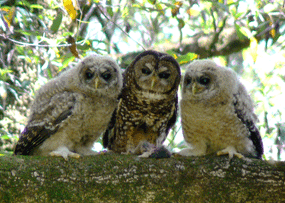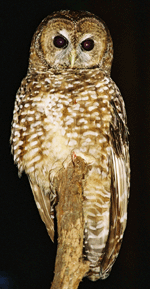
NPS Viewing Owls Hearing the thrilling call of an owl provides an exciting experience for the park visitor. Encounters with these birds either by hearing them or seeing them in flight can be the highlight of a trip into the National Park sites of Marin County, CA. Find out more about owl research and populations, and then get out into the park! Owling Tips: Owls are nocturnal birds. They are best seen at dawn or dusk. The following are a few pointers for viewing the owls. Do:
Do Not:
Living with Northern Spotted Owls: Spotted owls are year round residents in many Marin County, California forests. They are most vocal during nesting season, February through July. If you have owls near your home, hear are a few “good neighbor” guidelines: Do:
Do Not:

NPS Visiting the Parks at Night: Visiting a National Park at night is a very special experience. The crowds are gone. There are opportunities to see nocturnal creatures and enjoy the peace and quiet of night. Marvel at the night sky and have an adventure! To ensure you will enjoy you night visit, it is important to plan appropriately. Here are a few suggestions:
Call ahead to make sure the park you are visiting will be open: Muir Woods: (closed at night) 415-388-2595 (Nature Hotline) Point Reyes: 415-464-5100 Golden Gate: 415-331-1540 (Marin Headlands Visitor Center)
Suggestions for good night walk in owl habitat: Point Reyes: Bear Valley and Bolinas Ridge Trail Golden Gate: Tennessee Valley and Rodeo Valley Trails (Look for Great horned and Barn owls on these trails. These two trails are not in known Spotted owl habitat.) Join a special evening program (such as Footloose Forays, Marin Headlands Visitor Center, Marin County Open Space District, Point Reyes Field Seminars, and Point Reyes Visitor Center, or a Muir Woods Moonlight Walk). |
Last updated: October 6, 2020
